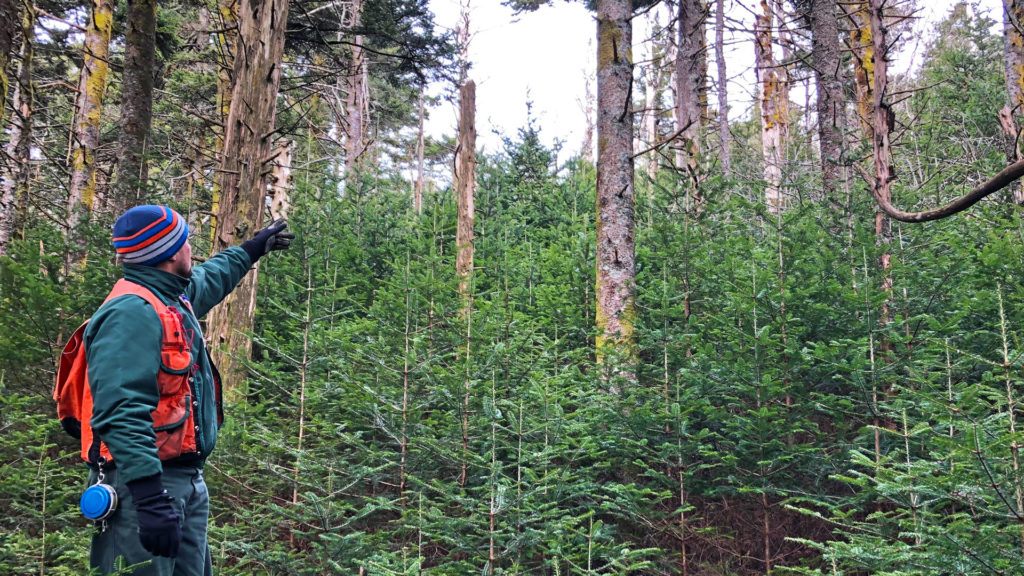by Jordan Bowman, ATC Communication Manager
Saving the Roan Highland Red Spruce Forests
October 2, 2019
The Roan Highlands offer some of the most breathtaking views along the Appalachian Trail, and they are also home to the beautiful red spruce. Red spruce are uncommon this far south, though they once covered vast expanses of the southern Appalachian Mountain landscape.
“Heavy logging practices in the early 20th century changed the forest composition,” said Matt Drury, Resource Management Coordinator for the Appalachian Trail Conservancy (ATC). “Many of these spruce forests regenerated into hardwood forests, leading to a steep decline in the species associated with spruce-fir communities.”
Today, a relatively small swath of red spruce are able to survive in the Roan Highlands due to the high altitude, climate and conservation efforts of recent years. These forests now provide a critical habitat for a wide variety of species. The federally endangered Carolina Northern Flying Squirrel lives here, feeding on truffles that grow along red spruce roots. So does the Red Crossbill, which uses its specialized bill to pry open spruce cones and extract the seeds inside.
However, due to past management practices dating back to the early 1900s, this rare habitat is at risk. Much of the remaining Roan red spruce have grown too close together and limit the growth of new trees. This has caused the Roan spruce to be too similar in size and age, making them vulnerable to disease and less resilient in the face of a changing landscape.
“Spruce is an integral component of the southern Appalachian spruce-fir ecoregion,” said Drury. “This habitat is listed as the second most endangered ecosystem in the United States. Preserving it is important, first and foremost, for the health of the surrounding environment, but it has also become an important part of the A.T. experience for thousands of hikers every year.”

An ATC staff member examines red spruce trees in the Roan Highlands.
In order to promote a healthy Roan ecosystem, ATC will be restoring several areas to allow red spruce to flourish and help establish a new generation of trees. This will introduce greater variety into the spruce stands and, as a result, lead to a thriving forest.
“Diversified stands provide higher wildlife value, greater capacity for carbon sequestration and increased resiliency,” said Drury. “The dynamic spruce-fir forest resulting from this effort will also support species biodiversity as well as unique recreational opportunities for visitors.”
Through this important work, we will ensure that A.T. hikers will be able to enjoy a walk through a thriving Roan Highland spruce forest for centuries to come.





